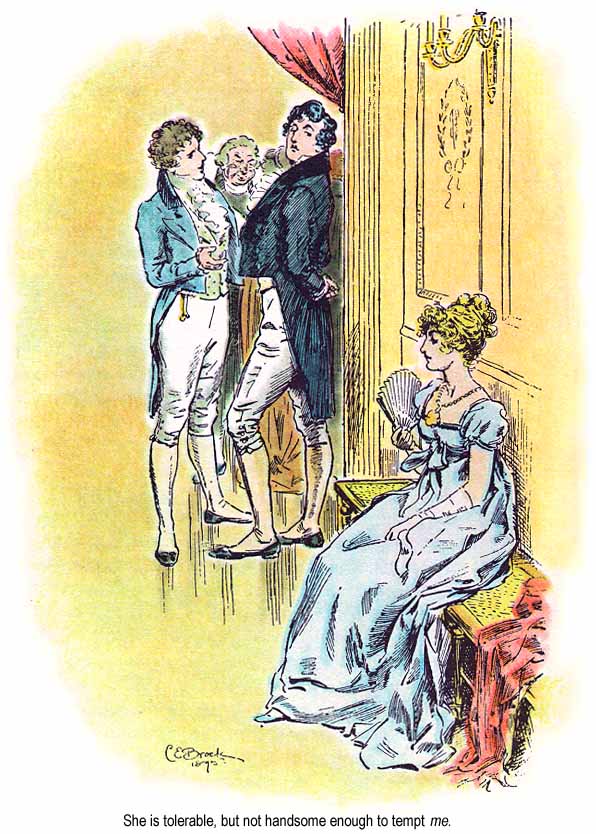|
The Radio Reader
''The Radio Reader'' is a daily half-hour radio program that was heard on 100 public radio stations in the United States. It was hosted and produced by Dick Estell from 1964 to 2016 and claimed an audience of 1.5 million listeners. Starting after Estell's retirement from Michigan State University in 1986, the show was recorded and produced in his home studio in Haslett, Michigan, near East Lansing. The program actually dated back to 1934 and was initially called ''The Radio Reading Circle'' at WKAR, Michigan State's public radio station. Broadcasts were 15 minutes and had no regular reader. Station manager Robert Coleman became the first regular reader and changed the name to its current one. Larry Frymire became the regular reader in 1944, and continued until he retired and was succeeded by Estell, hired by WKAR in 1952. Until the Estell era, it was heard only in Michigan markets and read an array of books ranging from classics such as '' Pride and Prejudice'' to modern work ... [...More Info...] [...Related Items...] OR: [Wikipedia] [Google] [Baidu] |
WKAR (AM)
WKAR (AM 870) is an educational radio station, licensed to the trustees of Michigan State University (MSU) at East Lansing, Michigan, United States. The station is part of MSU's Broadcasting Services Division, along with WKAR-FM and WKAR-TV. Studios and offices are located in the Communication Arts and Sciences Building, at the southeast corner of Wilson and Red Cedar Roads on the MSU campus. WKAR is one of the few National Public Radio (NPR) stations that does not operate 24 hours a day, as it is licensed for daytime-only operation. Its 10,000 watt signal reaches as far east as Flint and Ann Arbor, and as far west as Grand Rapids. "WKAR(AM) 870 kHz signal covers about half the Lower Peninsula operating at 10 kW daytime only." The station must sign off at sundown in order to protect the nighttime signal of WWL in New Orleans. Louisiana. It generally signs off between 5 p.m. and 6 p.m. during winter months, returning to the air at 8 a.m., and generally signs off around 8 p.m. duri ... [...More Info...] [...Related Items...] OR: [Wikipedia] [Google] [Baidu] |
Public Radio
Public broadcasting involves radio, television and other electronic media outlets whose primary mission is public service. Public broadcasters receive funding from diverse sources including license fees, individual contributions, public financing and commercial financing. Public broadcasting may be nationally or locally operated, depending on the country and the station. In some countries a single organization runs public broadcasting. Other countries have multiple public-broadcasting organizations operating regionally or in different languages. Historically, public broadcasting was once the dominant or only form of broadcasting in many countries (with the notable exceptions of the United States, Mexico and Brazil). Commercial broadcasting now also exists in most of these countries; the number of countries with only public broadcasting declined substantially during the latter part of the 20th century. Definition The primary mission of public broadcasting is that of public servic ... [...More Info...] [...Related Items...] OR: [Wikipedia] [Google] [Baidu] |
Dick Estell
Dick Estell (April 11, 1926 – May 6, 2016) was an American radio personality. He was the host and producer of '' The Radio Reader'', a serial public radio program in which the host reads aloud from contemporary novels. The program was carried on public broadcasting stations in the United States. Background Born and raised in Hillsdale, Michigan, Estell enrolled at the University of Detroit following high school. However, he left after a year to join the United States Air Force. He trained as a ball turret gunner/radio operator, but World War II ended before he saw active duty. After military service, he attended a radio/TV broadcasting school in Los Angeles. Upon graduating, he accepted a position as radio announcer/engineer at a commercial radio station in Michigan. Radio career After five years, Estell decided to finish his college studies and entered the radio/TV program at Michigan State University. In 1964, he took over ''The Radio Reader'' from his predecessor at MSU's ... [...More Info...] [...Related Items...] OR: [Wikipedia] [Google] [Baidu] |
Michigan State University
Michigan State University (Michigan State, MSU) is a public university, public Land-grant university, land-grant research university in East Lansing, Michigan. It was founded in 1855 as the Agricultural College of the State of Michigan, the first of its kind in the United States. It is considered a Public Ivy, or a public institution which offers an academic experience similar to that of an Ivy League university. After the introduction of the Morrill Land-Grant Acts, Morrill Act in 1862, the state designated the college a land-grant institution in 1863, making it the first of the land-grant colleges in the United States. The college became coeducational in 1870. In 1955, the state officially made the college a university, and the current name, Michigan State University, was adopted in 1964. Today, Michigan State has the largest undergraduate enrollment among Michigan's colleges and universities and approximately 634,300 living alums worldwide. The university is a member of the ... [...More Info...] [...Related Items...] OR: [Wikipedia] [Google] [Baidu] |
Haslett, Michigan
Haslett is a census-designated place (CDP) in Ingham County in the U.S. state of Michigan. It is located mostly within Meridian Charter Township with a small portion extending east into Williamstown Township. The population was 19,220 at the 2010 census. Haslett contains its own school district, as well as its own post office with the 48840 ZIP Code. History Haslett is named after James and Sarah Haslett, a couple who founded the Nemoka Spiritualist Camp on the shore of Pine Lake (Original name for Lake Lansing). By the later 1800s, thousands of spiritualists descended on Haslett Park for summer meetings, readings, lectures, and seances. Mr. Haslett had hoped to establish his camp as the National Headquarters for the spiritualist movement. His untimely death in 1891 and the decline of the spiritualist movement cause his widow to sell the land to the Haslett Park Association in 1898. The new owners transformed the land into a summer recreational destination, and eventua ... [...More Info...] [...Related Items...] OR: [Wikipedia] [Google] [Baidu] |
East Lansing
East Lansing is a city in the U.S. state of Michigan. Most of the city lies within Ingham County with a smaller portion extending north into Clinton County. At the 2020 Census the population was 47,741. Located directly east of the state capital of Lansing, East Lansing is well-known as the home of Michigan State University. The city is part of the Lansing–East Lansing metropolitan area. History East Lansing is located on land that was an important junction of two major Native American groups: the Potawatomi and the Fox. By 1850, the Lansing and Howell Plank Road Company was established to connect a toll road to the Detroit and Howell Plank Road, improving travel between Detroit and Lansing, which cut right through what is now East Lansing. The toll road was finished in 1853, and included seven toll houses between Lansing and Howell. Michigan State University was founded in 1855 and established in what is now East Lansing in 1857. For the first four decades, the students and ... [...More Info...] [...Related Items...] OR: [Wikipedia] [Google] [Baidu] |
Larry Frymire
Larry is a masculine given name in English, derived from Lawrence or Laurence. It can be a shortened form of those names. Larry may refer to the following: People Arts and entertainment *Larry D. Alexander, American artist/writer * Larry Boone, American country singer * Larry Collins, American musician, member of the rockabilly sibling duo The Collins Kids * Larry David (born 1947), Emmy-winning American actor, writer, comedian, producer and film director * Larry Emdur, Australian TV host * Larry Feign, American cartoonist working in Hong Kong * Larry Fine, of the Three Stooges *Larry Gates, American actor * Larry Gatlin, American country singer * Larry Gelbart (1928–2009), American screenwriter, playwright, director and author *Larry Graham, founder of American funk band Graham Central Station *Larry Hagman, American actor, best known for the TV series ''I Dream of Jeannie'' and ''Dallas'' * Larry Henley (1937–2014), American singer and songwriter, member of The Newbeat ... [...More Info...] [...Related Items...] OR: [Wikipedia] [Google] [Baidu] |
Pride And Prejudice
''Pride and Prejudice'' is an 1813 novel of manners by Jane Austen. The novel follows the character development of Elizabeth Bennet, the dynamic protagonist of the book who learns about the repercussions of hasty judgments and comes to appreciate the difference between superficial goodness and actual goodness. Mr. Bennet, owner of the Longbourn estate in Hertfordshire, has five daughters, but his property is Fee tail, entailed and can only be passed to a male heir. His wife also lacks an inheritance, so his family faces becoming poor upon his death. Thus, it is imperative that at least one of the daughters marries well to support the others, which is a motivation that drives the plot. ''Pride and Prejudice'' has consistently appeared near the top of lists of "most-loved books" among literary scholars and the reading public. It has become one of the most popular novels in English literature, with over 20 million copies sold, and has inspired many derivatives in modern literatur ... [...More Info...] [...Related Items...] OR: [Wikipedia] [Google] [Baidu] |
Ampex
Ampex is an American electronics company founded in 1944 by Alexander M. Poniatoff as a spin-off of Dalmo-Victor. The name AMPEX is a portmanteau, created by its founder, which stands for Alexander M. Poniatoff Excellence.AbramsoThe History of television, 1942 to 2000– McFarland, 2003 – , page 286, Chapter 2, footnote 34 "1944 he founded Ampex (the name was created from his initials, AMP, plus "ex" for excellence)" Today, Ampex operates as Ampex Data Systems Corporation, a subsidiary of Delta Information Systems, and consists of two business units. The Silicon Valley unit, known internally as Ampex Data Systems (ADS), manufactures digital data storage systems capable of functioning in harsh environments. The Colorado Springs, Colorado unit, referred to as Ampex Intelligent Systems (AIS), serves as a laboratory and hub for the company's line of industrial control systems, cyber security products and services and its artificial intelligence/machine learning technology. Am ... [...More Info...] [...Related Items...] OR: [Wikipedia] [Google] [Baidu] |
Ampex 601
The Ampex 601 was a portable, analog, reel-to-reel Reel-to-reel audio tape recording, also called open-reel recording, is magnetic tape audio recording in which the recording tape is spooled between reels. To prepare for use, the ''supply reel'' (or ''feed reel'') containing the tape is plac ... tape recorder produced by The Ampex Corporation from the mid-1950s through the 1960s. Ampex manufactured a single-channel model (the 601) and dual-channel version (the 601-2). The suitcase-sized, 26 lb. unit was designed for the professional recording applications. It recorded to ¼-inch tape on 5-inch or 7-inch reels. The Ampex 601 was preceded by the Ampex 600. Although there was no officially-released Ampex 600-2, there were factory bulletins available which detailed how to change the second electronics to support the equivalent of 600-2 mode, and this made use of the 601-2's head stack possible, thereby creating the functional equivalent of a 600-2. The Ampex 601 was succee ... [...More Info...] [...Related Items...] OR: [Wikipedia] [Google] [Baidu] |
Mini-Disc
MiniDisc (MD) is an erasable magneto-optical disc-based data storage format offering a capacity of 60, 74, and later, 80 minutes of digitized audio. Sony announced the MiniDisc in September 1992 and released it in November of that year for sale in Japan and in December in Europe, North America, and other countries. The music format was based on ATRAC audio data compression, Sony's own proprietary compression code. Its successor, Hi-MD, would later introduce the option of linear PCM digital recording to meet audio quality comparable to that of a compact disc. MiniDiscs were very popular in Japan and found moderate success in Europe; although it was designed to be the successor of the cassette tape, it did not manage to mass replace it globally. By March 2011 Sony had sold 22 million MD players. Sony has ceased development of MD devices, with the last of the players sold by March 2013. Market history In 1983, just a year after the introduction of the Compact Disc, K ... [...More Info...] [...Related Items...] OR: [Wikipedia] [Google] [Baidu] |






